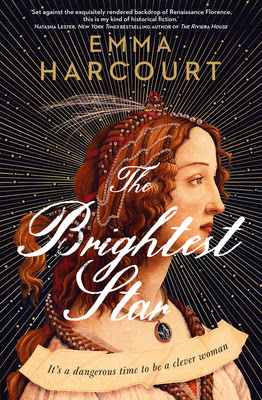Synopsis
1496. It is the height of the Renaissance and its flowering of intellectual and artistic endeavour, but the city state of Florence is in the grip of fundamentalist preacher Friar Girolamo Savonarola. Its good people believe the Lord speaks through him, just as certainly as the Sun circles the Earth.
For Leonarda Lunetta, eldest daughter of the learned Signore Vincenzo Fusili, religion is not as interesting as the books she shares with her beloved father. Reading is an escape from the ridicule flung her way, for Luna is not like other girls. She was born with a misshapen leg and that, and her passion for intellectual pursuits - particularly astronomy - alters how society sees her and how she sees the world.
Luna wants to know, to learn, to become an astronomer who charts the nights sky - certainly not the dutiful, marriageable daughter all of Florence society insists upon. So when Luna meets astronomer Nicolaus Copernicus, she is not surprised that his heretical beliefs confirm her view that world is not as it is presented - or how it could be. These dangerous ideas bring her into conflict with the preacher Savonarola, and her future is changed irrevocably as politics, extremism and belief systems ignite in a dangerous conflagration.
Luna is a woman born out of time, the brightest star of her generation, but can she reconcile the girl of her father's making with this new version of herself? And if she does, will Renaissance Italy prove too perilous and dark a place for a free-thinking woman?
My Thoughts
The Brightest Star is set at the end of the 15th century when the Medici, the powerful political family of Florence, have been exiled from the city and are laying plans to return, and the Dominican Friar, Savonarola, is determined to establish a new republic through a puritancial crusade.
Luna, born with a deformity, is intelligent and eager to further her education. She has been encouraged by her father to read and voice her opinions. However, such behaviour tolerated and found amusing in a child is not acceptable in a young woman of marriageable age. This trait, aside from her deformity which is seen as a curse from God, sees Luna continually criticised and disrespected. Sadly, her deformity also means she is worthless as a marriage asset at a time when contracting a fortuitous marriage for their daughters is the aim of every wealthy family. Happy to be overlooked in favour of her younger sister, Luna's greatest hope is to continue living with her father and stepmother whilst studying astronomy, an interest fostered by her father and the time spent stargazing with him cherished. When her father's reputation begins to suffer, plans are made for Luna's future. Plans that Luna's behaviour ruins and eventually has dire consequences for the family.
The story alternates between the perspective of her father and Luna, so that we see events from two sides. Her father is a cloth merchant and a supporter of the Medici. At first I liked her father who championed Luna against the world, but then certain aspects of his behavior were revealed and my opinion of him changed, especially as he came to view Luna as a liability. Always secure in her father's love, a sharing of a secret devastates Luna and reveals that their relationship was built on a lie.
There is an interesting parade of historical figures in this novel. Aside from the Florentines such as the Medici and Savaronola, a young Nicolaus Copernicus and his mentor, Professor Domenico di Novara and his wife, Elisabetta, become important people in Luna's life through their acceptance of Luna's quest for knowledge and showing that she could be valued for herself.
While the novel did take off slowly, I appreciated the time it took to become familiar with Luna and the society of which she was a part. It gave credence to the prejudice she suffered as a person with a disability and as an educated female. Unfairly blamed when family matters take a downward path, it was sad to witness the change in Luna. She went from a reasonably happy person despite her treatment to one resigned to her father's final decision for her future, which was a convenient and popular method for dealing with troublesome females.
I enjoyed this foray into Renaissance Italy and the science of astronomy. The history of both was entertaining and informative, and Luna's story set against this background highlighted the way women and deformity were viewed at that time. Although the Renaissance brought many changes, superstition, religion, politics and the role of women in society were very much contentious issues.
Thank you to the publisher for a review copy.


No comments:
Post a Comment